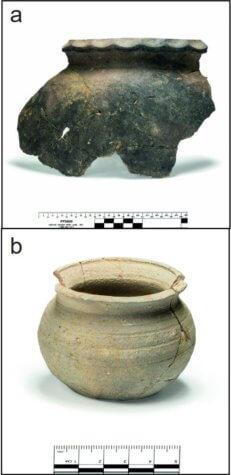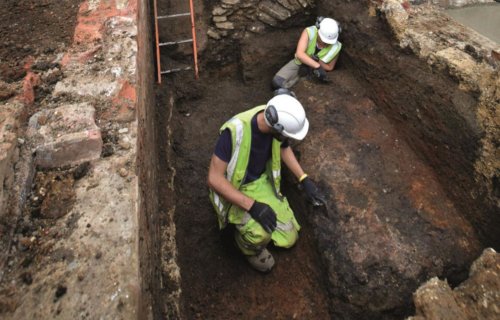BRISTOL, United Kingdom — The Jewish people trace their origins back thousands of years. Throughout much of that history, maintaining a kosher diet is one of the most important aspects of their faith. Now, a new archeological discovery in Oxford, England is providing insight into the dietary practices of medieval Jews. Researchers say artifacts at the site mark the oldest known evidence of humans observing a religious diet.
Dating back roughly 800 years, these centuries-old pieces of food residue suggest local Jews living in that area at that time still ate kosher.
“This is a remarkable example of how biomolecular information extracted from medieval pottery and combined with ancient documents and animal bones, has provided a unique insight into 800-year-old Jewish dietary practices,” says lead study author Dr. Julie Dunne from the University of Bristol’s School of Chemistry in a release.
Researchers believe, in the 12th and 13th centuries, Oxford’s local Jewish community took root around St. Aldates Church. Historically, this timeline makes sense as well. Around that time, William the Conqueror invited French Jews to settle down in England. Much more recently, excavations in the area unearthed evidence of two households which may have been inhabited by Jewish families.
While excavating those locations, archaeologists discovered a latrine from around the same time period. They also recovered a variety of animal bones nearby, mostly consisting of geese. Importantly, researchers did not find any traces of pork or pig bones, suggesting adherence to a kosher diet. The team did come across some fish bones, but only kosher varieties such as herring.
Did all Jews observe a kosher diet during medieval times?

University of Bristol)
In an effort to better understand the dietary habits of the two medieval houses, researchers used a combination of chemical and isotopic techniques to analyze, identify, and quantify food residue in the pots from the site.
The results reveal that these Jews in Oxford only used their pots to cook cattle, sheep, and goat meat. Scientists could not find any signs of pork at all. It’s worth mentioning that study authors analyzed other samples from nearby areas, not located within Oxford’s medieval Jewish quarter. Those tests did show evidence of pork consumption.
“The results of the excavation at St Aldates and Queen Street have been astonishing, not only revealing rare archaeological evidence of a medieval Jewry in Britain, but also demonstrating the enormous value of carefully focused analysis that combines traditional finds and stratigraphic analysis with scientific techniques,” adds Edward Biddulph, manager of the post-excavation project at Oxford Archaeology.
“Human dietary choices are based on far more than availability or caloric content. What’s really exciting is how this evidence for dietary patterns in Medieval Oxford informs us about the diversity of cultural practices and beliefs that were present in the past, as today,” concludes study co-author Dr. Lucy Cramp, a senior lecturer in the Department of Anthropology and Archaeology at Bristol.
The findings appear in the journal Archaeological and Anthropological Sciences.
